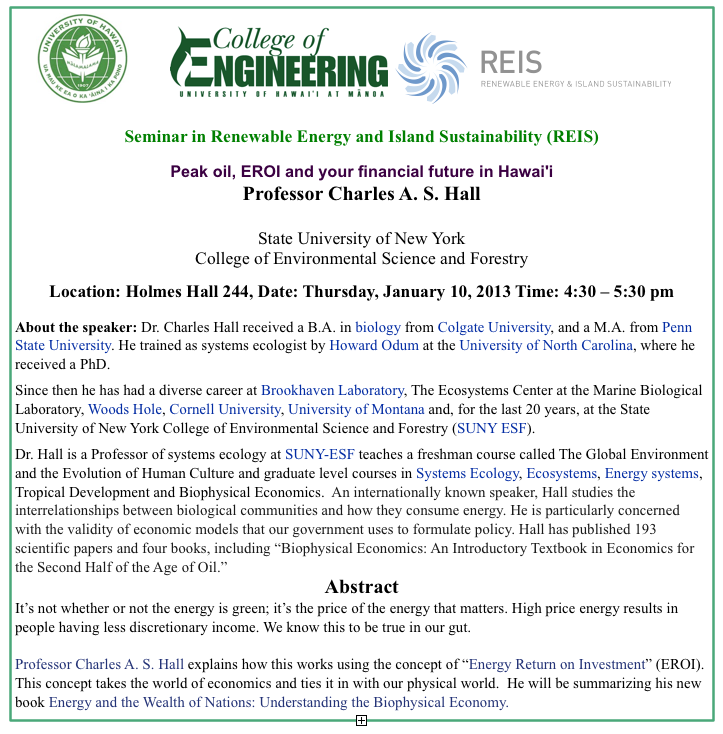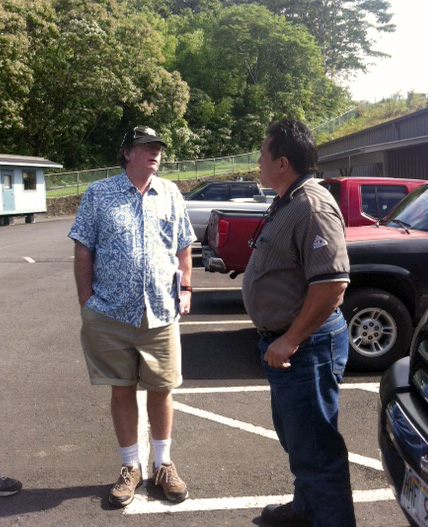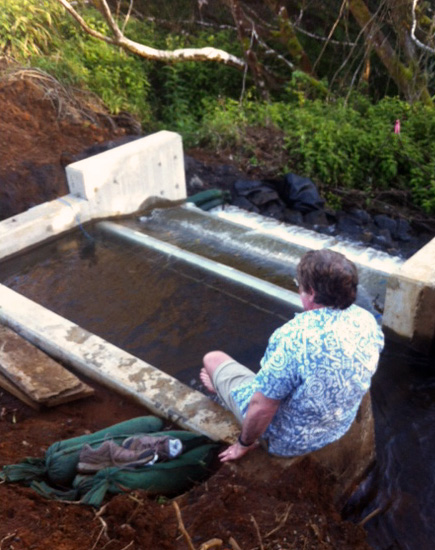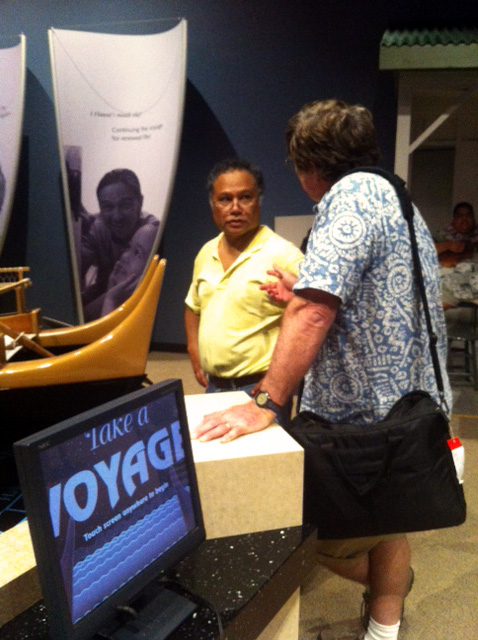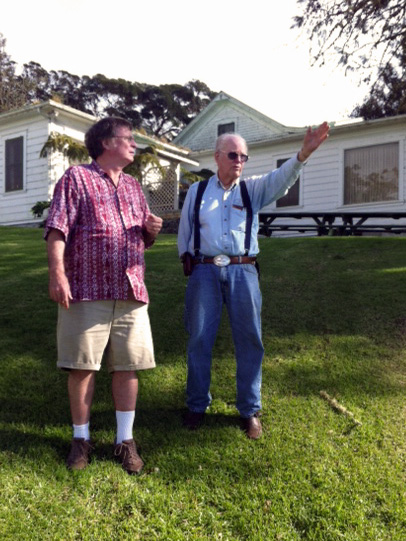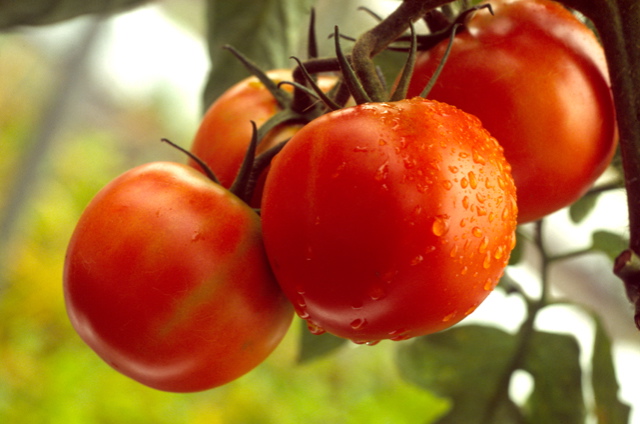Richard Ha writes:
Approximately 100 people showed up last night at the Leilani Estate Community Center to learn the facts about geothermal energy.
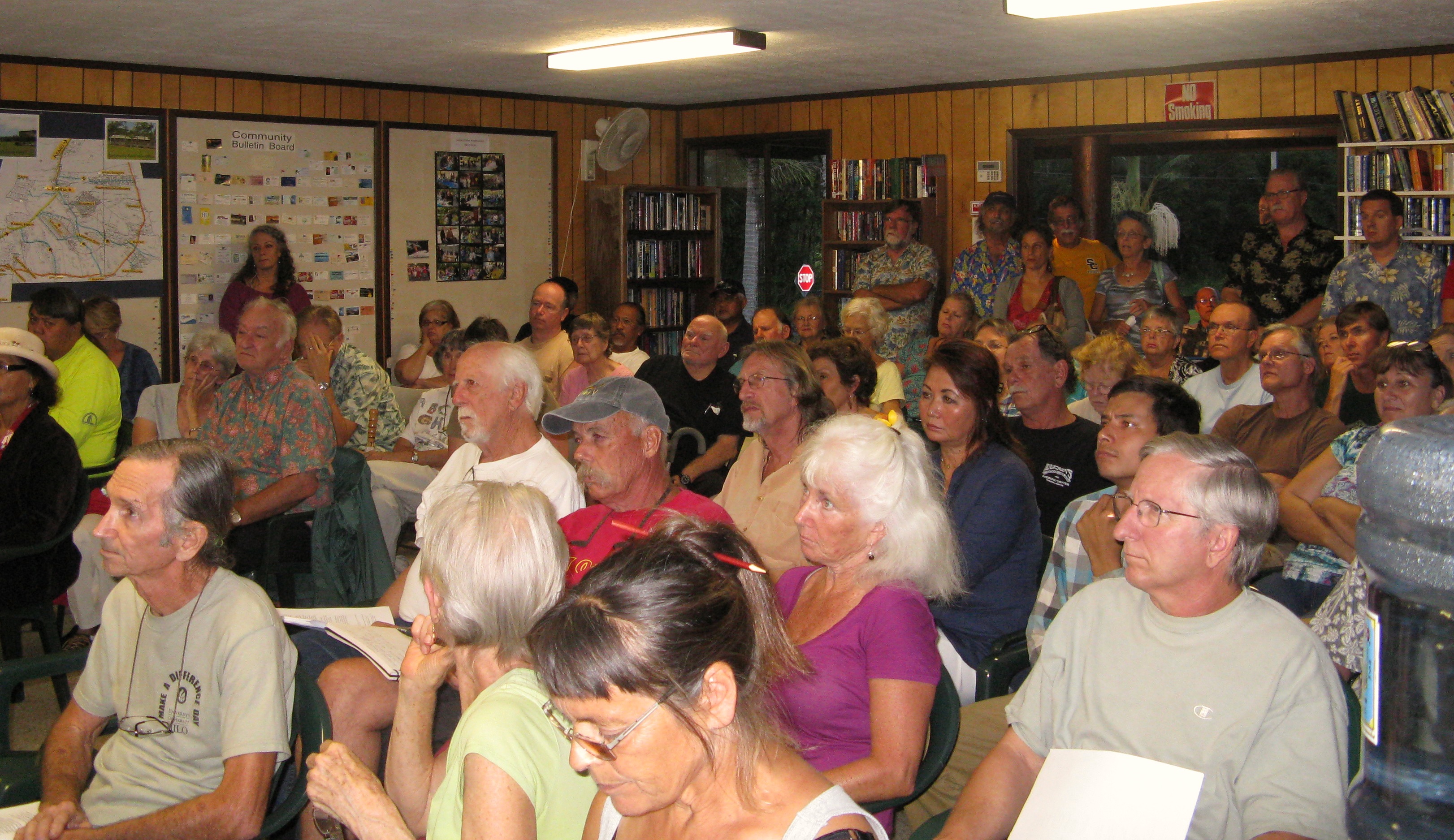
Some of the testimony – from folks who have worked at the geothermal facility, as well as those who live close by – was especially impactful.
I took 10 minutes to talk about a danger we are facing: Rising oil prices. If we have sincere dialogue among all the parties, we can start to see that rising oil prices will threaten our social fabric – and most of all, our spirit of aloha. And maybe we can do something about it. But we don’t have the luxury of time.
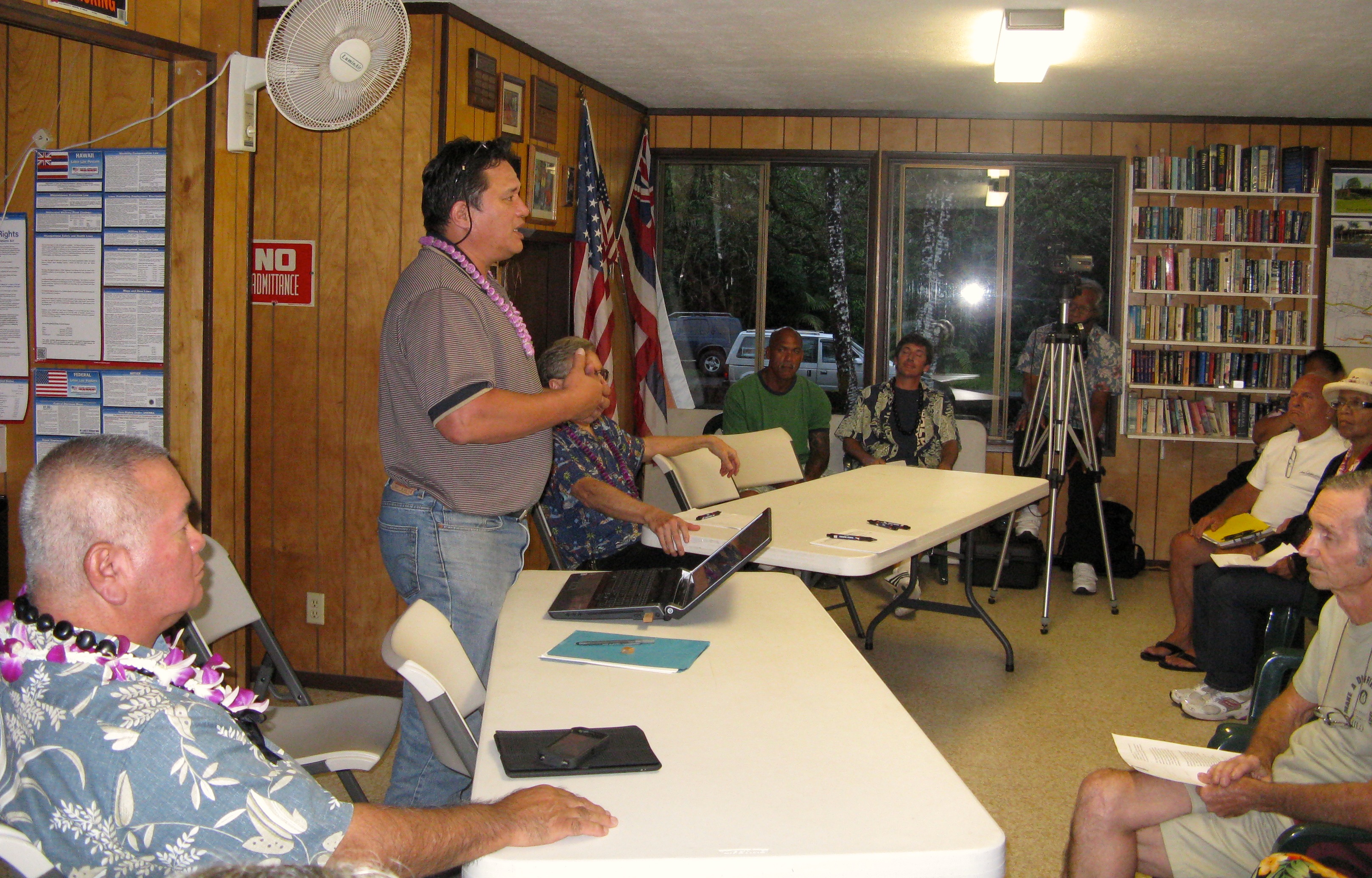
Why can’t we, here on the Big Island, have lower electricity rates than O‘ahu? It would lessen pressure on the most vulnerable families, help farmers compete, help businesses create more jobs and prevent the export of our most precious resource – our children.
Mike Kaleikini, Plant Manager of Puna Geothermal Venture, talked about the history of geothermal production, mitigation measures and safety regulations. Mike has a way of explaining complex issues that is easy to understand.
Don Thomas gave a talk about the technical side of the H2S issue, which had a big impact on the audience. Both Mike and Don are very credible, as they have actual, real-life experience and speak about facts that are verifiable.
I would say the crowd was 70 to 30 percent for geothermal. But it isn’t a matter of “us” against “them.” It was the discussion and sharing of information that was most important. At some point, I hope soon, we can come to grips with the larger issues of rising prices, and how we can maximize our resources in a smart and responsible way.
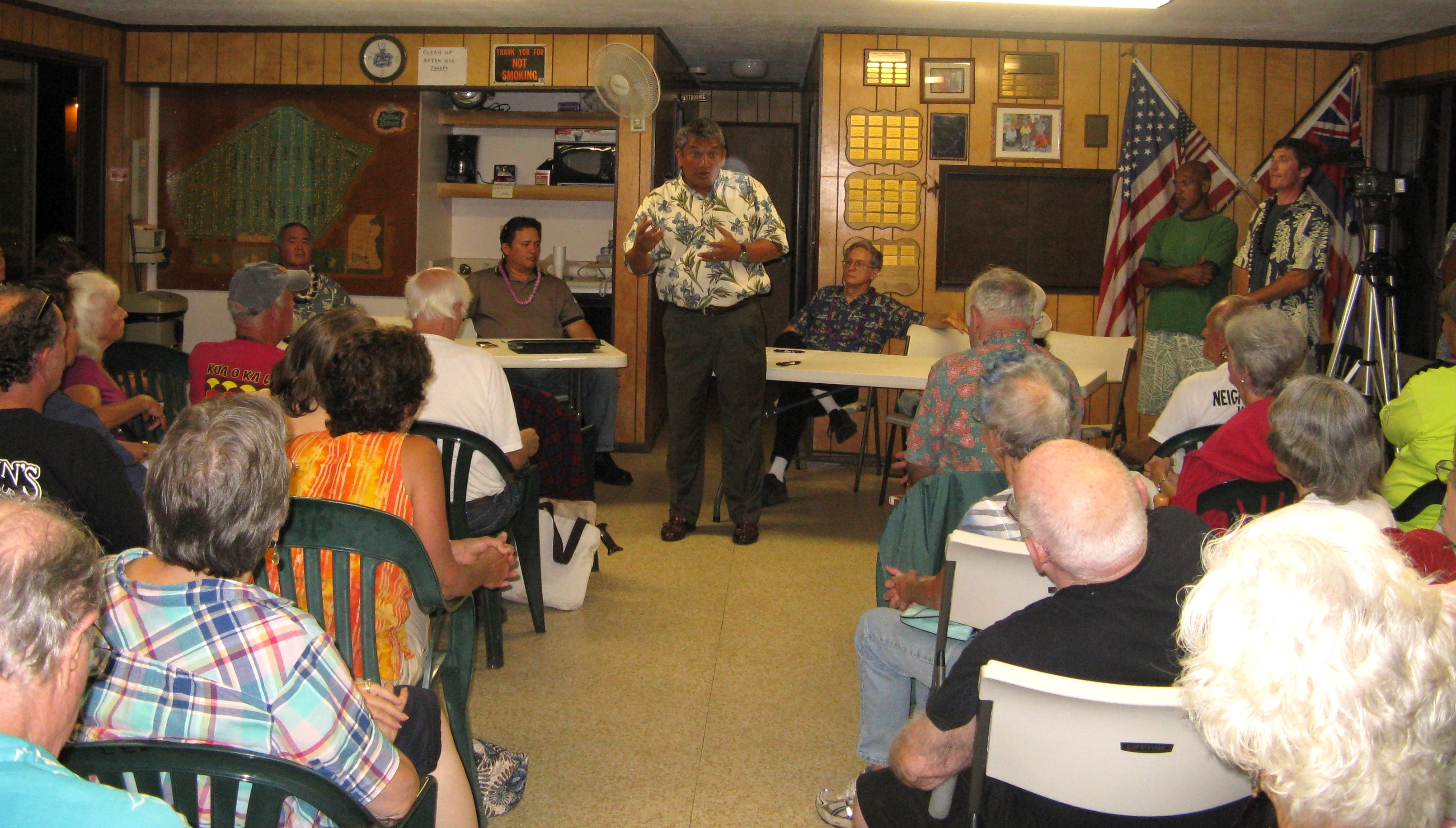
To cap things off, Mayor Billy Kenoi showed up after the mayoral candidate debate in Pahoa concluded. He did a good job of explaining, in a commonsense way, why there is no need for the council bill. It is redundant and adds problems that are unnecessary.
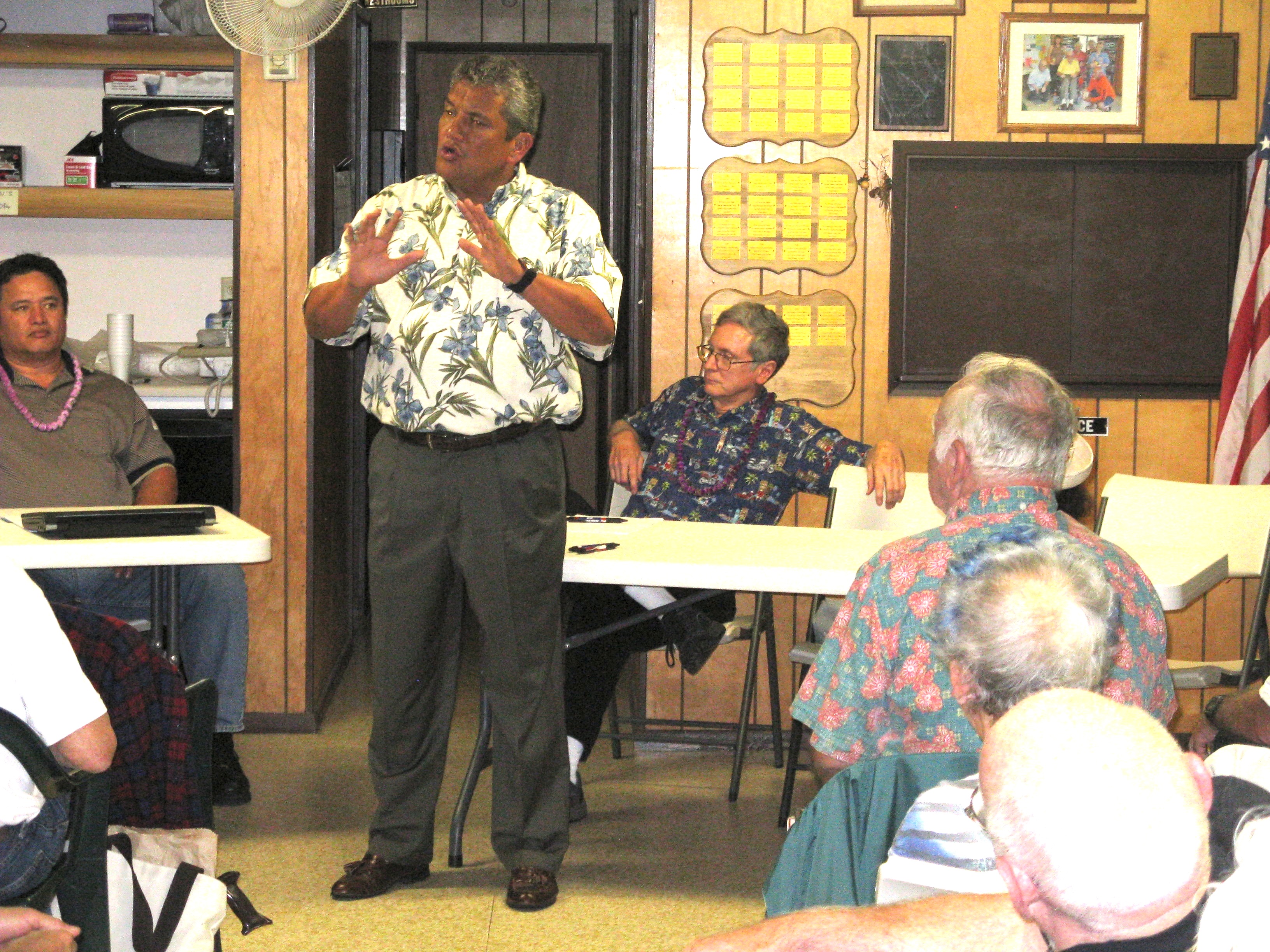
All attending were Councilman Fred Blas as well as Representative Faye Hanohano.
Late last night we received a note from Petra Wiesenbauer, Jan Kama and Loren Avedon, who organized the meeting:
Richard, Mike, and Don,
Mahalo for an outstanding presentation tonite to the residents of Leilani Estates and community members. There were many comments after the meeting that people had a better understanding of how the plant operates and its impact on the community. Whether or not they understand the difference between H2S and SO2 is questionable, but at least they feel more comfortable knowing that they are not as much at risk as they thought.
And Petra Wiesenbauer, who lives in and runs a B&B in Leilani Estates, sent along some further comments of her own about the meeting (as well as the photos in this post):
I think it was an extremely good meeting last night. I am so proud of everybody for staying focused and respectful.
Don Thomas was absolutely excellent. It was so good to have him there with all the numbers of emissions, comparisons of different regions and being able to putting things into perspective, i.e., the Volcano blasting out 600 to 1,000 tons of stuff every day. He was able to dismantle some of the myths and clear up rumors and anxieties.
Mike was really, really good, too in making transparent what is going on at the plant and the strict restrictions they are under in regards to their monitoring, their chemicals and general equipment maintenance.
That the Mayor was able to come at the end was an added bonus and gave the whole meeting a great finale.
I talked to Jeff Melrose a little and he said, that they are working on a brochure/informational materials about disaster response/evacuation, safety and other community concerns regarding geothermal development. He is such a great guy as well and so knowledgeable about all the Big Island planning and land dealings. He thought it was the best meeting he has been to in a long time about this whole controversy and he thought it was amazing, that something like that had not been done much earlier.
I give so much credit for the course of the evening to Loren [Avedon], our moderator. He was great and made sure there were no lengthy statements, self indulgence, lamentations and other behaviors from any of the audience that could have been counterproductive to the outcome of the meeting.
The whole meeting came about as a result of this note that had been sent around about the July 19th County Council meeting:
“There was something odd about today’s County Council meeting…all of us testifying at the Pahoa office were in opposition to the legislation, with the exception of three people. Apparently the anti-geothermal group had received word that the bills would be postponed for 30 days.”
Those of us who attended the County Council meeting to override the Mayor veto of Bill 256 were prepared for more than 100 folks picketing the County building, and protesting loudly. But no one showed up.
The email back and forth resulted in someone asking me to post their testimony on my blog, which I did. Then on the 22nd, this note was sent around:
“We would actually love to take you up on your offer to come here and give a talk to interested residents here in Leilani. It would be a good way to also promote the petition http://www.change.org/petitions/hawaii-county-council-petition, and therefore it would be great to do it as soon as possible. We were wondering if you had time on Tuesday at around 6:30pm. If not any other day that is convenient for you just let us know?”
By the next day, I had confirmed that Don Thomas, Wally Ishibashi and Mike Kaleikini would attend. All this happened really quickly.
With only two days notice, 100 people showed up, standing room only. I was amazed.
• Here is a recent Civil Beat article, titled “Arguments Against Geothermal Are ‘Absurdly Elitest,’ Says Scientist.
• You can still sign the Hawaii County Council petition here, which asks:
We humbly ask you to sign our petition before July 30th, 2012 asking the County Council of Hawaii to honor the Mayor’s veto of Bill 256, Draft 2. The bill would allow the County to create a one-mile safety buffer zone around the Puna Geothermal Power Plant. [Read more at the link]

